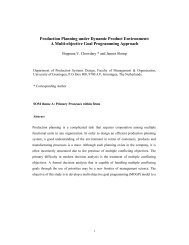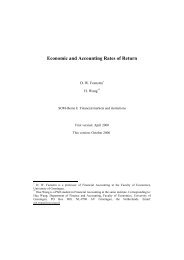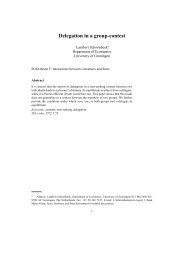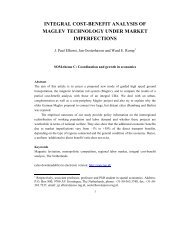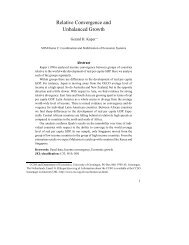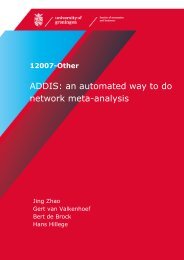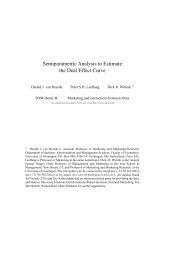Communication and Industrial Accidents - SOM Research Reports
Communication and Industrial Accidents - SOM Research Reports
Communication and Industrial Accidents - SOM Research Reports
Create successful ePaper yourself
Turn your PDF publications into a flip-book with our unique Google optimized e-Paper software.
directives from superiors, <strong>and</strong> reports from subordinates on task related topics (Likert<br />
scales, Alpha = .6517; N 446, total score: 0 - 16). E.g. ‘I am required to report<br />
detailed technical information to my superior’ <strong>and</strong> ‘Every day I receive directives<br />
about what to do’.<br />
Informative/innovative communication on the other side is less structured <strong>and</strong><br />
less tightly related to the task as regulative/instructive communication is. It relates to<br />
problem finding, problem resolution, generating ideas, etc. To measure this kind of<br />
communication fifteen items were used based on the audit from Greenbaum (1974)<br />
<strong>and</strong> items from Schuler <strong>and</strong> Blank (1976), <strong>and</strong> on the OPRA98 audit 5 (Likert scales,<br />
Alpha = .8681; N 420, total score: 0 - 60). E.g. ‘<strong>Communication</strong>s flow both up <strong>and</strong><br />
down’, ‘Feedback about P&Is is the rule rather than the exception’, <strong>and</strong> ‘In our<br />
organization colleagues inform each other regularly about successful practical<br />
experiences <strong>and</strong> projects (best practice)’.<br />
To measure integrative communication seven items were used, based on the<br />
communication items from Schuler <strong>and</strong> Blank (1976) <strong>and</strong> items about communication<br />
between different departments from Georgopoulos <strong>and</strong> Mann (1962). These are about<br />
information that is not immediately relevant for the own task, <strong>and</strong> communication<br />
about intersecting activities (Likert scales, Alpha = .6748; N 443, total score: 0 - 32).<br />
E.g. ‘I get enough information about the problems within my organization’ <strong>and</strong><br />
‘When I am in trouble, it is easy to visit my superior’.<br />
In order to measure safety communication I used ten items, derived from the<br />
interviews. These refer to the possibility <strong>and</strong> frequency of communication about<br />
safety, <strong>and</strong> dangerous situations (Likert scales, Alpha = .7626; N 435, total score: 0 -<br />
40). E.g. ‘If it is about safety, they never ask my opinion’ <strong>and</strong> ‘It is useful to report<br />
risks (near-misses, etc.)’. As stated, the obstacles involve communication disturbing<br />
factors in general, <strong>and</strong> the consequences for the individual employee in particular.<br />
These disturbing factors were measured by thirteen items, based on the ‘Upward<br />
<strong>Communication</strong> Behaviour Scale’ of Roberts <strong>and</strong> O’Reilly (1974-1) <strong>and</strong> Distortive<br />
<strong>Communication</strong> items of Schuler (1979:280). This more general scale measures a<br />
5 Pilot survey ‘Order management Proces Audit’ (OPRA98) by P.Post, University of<br />
Groningen.<br />
17



